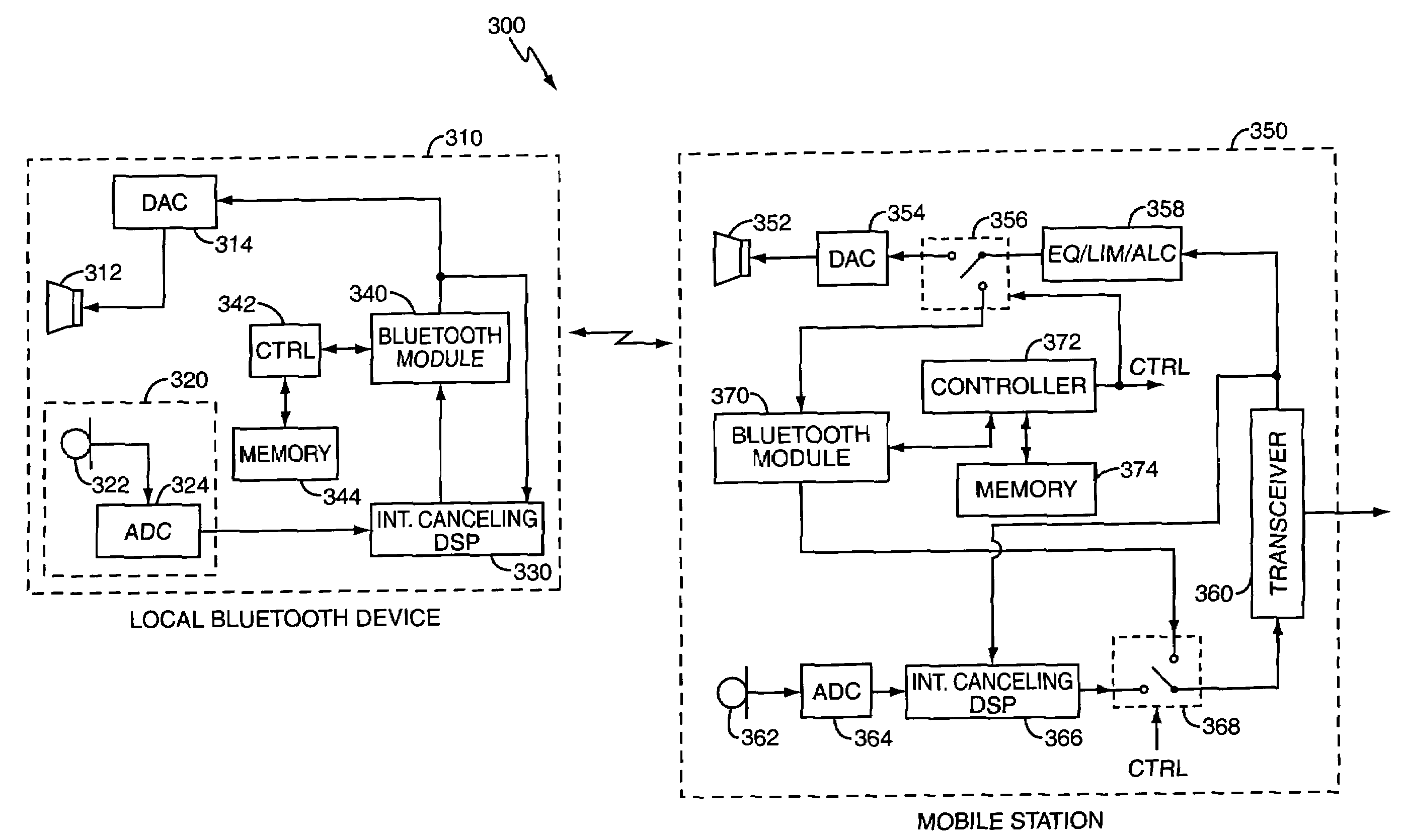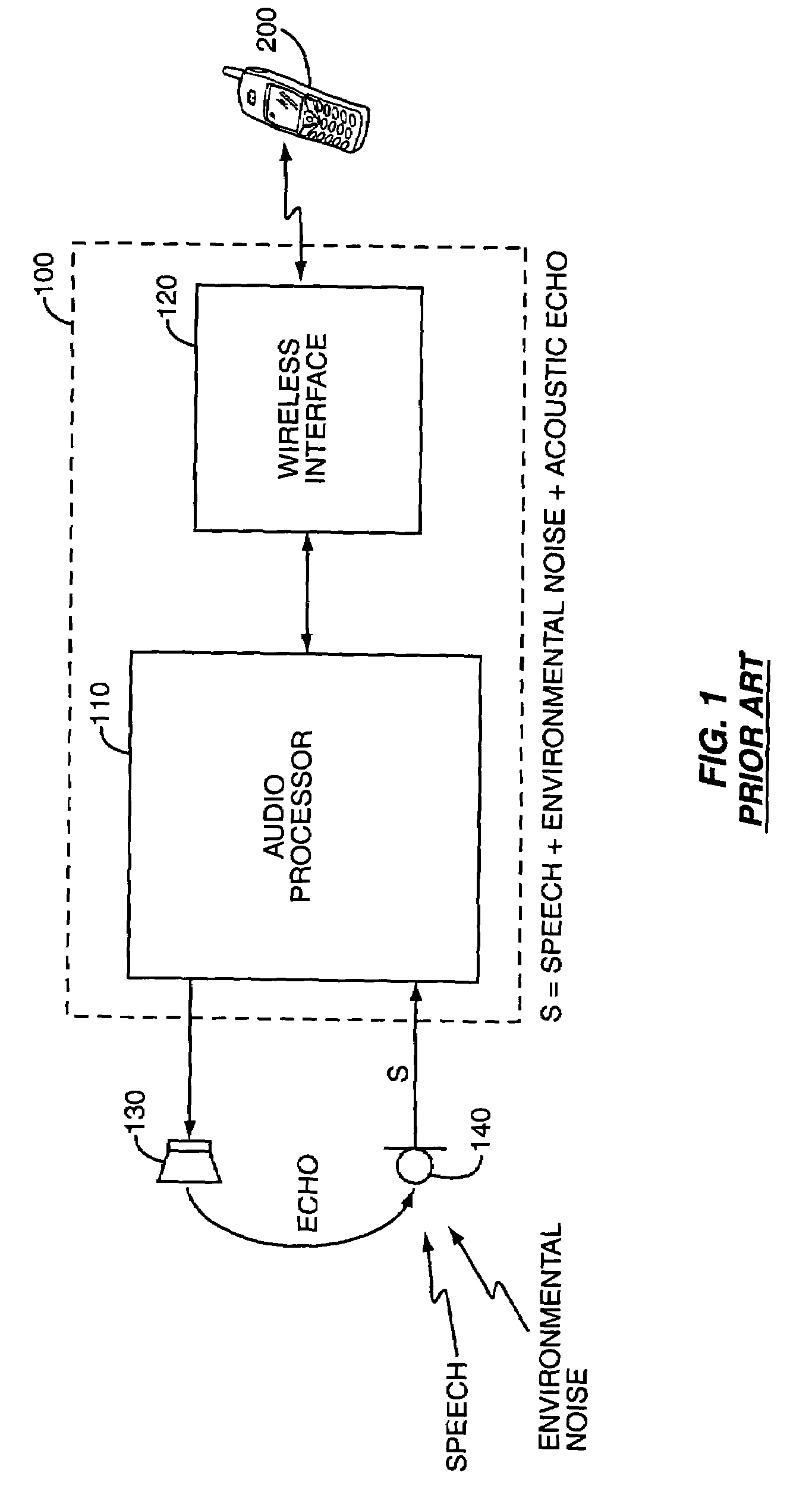Bluetooth enabled hearing aid
a hearing aid and bluetooth technology, applied in the field of hearing aids, can solve the problems of unsatisfactory noise to transmit to a far-end user, more susceptible to interference of the hearing aid, etc., and achieve the effect of improving interference suppression processing
- Summary
- Abstract
- Description
- Claims
- Application Information
AI Technical Summary
Problems solved by technology
Method used
Image
Examples
Embodiment Construction
[0021]FIG. 1 illustrates a conventional local wireless device 100 that includes audio processing circuits 110 and a wireless interface 120, such as a Bluetooth® interface, for processing, transmitting, and receiving RF signals. Audio processing circuits 110 provide basic audio output to speaker 130 and receive audio input from microphone 140. As shown in FIG. 1, microphone 140 detects various external audio signals, such as speech signals from a near-end user, echo signals from speaker 130, and noise from the environment.
[0022]Local wireless device 100 communicates information with a near-by mobile station 200 via a short-range wireless network. Because it is desirable to transmit only the speech signals to a remote far-end user, mobile station 200 typically includes an interference suppression processor (not shown) to suppress the acoustic echo and / or the environmental noise discussed above. Commonly assigned U.S. Pat. Nos. 6,148,078, 6,160,886, and 6,570,985 provide exemplary echo...
PUM
 Login to View More
Login to View More Abstract
Description
Claims
Application Information
 Login to View More
Login to View More - R&D
- Intellectual Property
- Life Sciences
- Materials
- Tech Scout
- Unparalleled Data Quality
- Higher Quality Content
- 60% Fewer Hallucinations
Browse by: Latest US Patents, China's latest patents, Technical Efficacy Thesaurus, Application Domain, Technology Topic, Popular Technical Reports.
© 2025 PatSnap. All rights reserved.Legal|Privacy policy|Modern Slavery Act Transparency Statement|Sitemap|About US| Contact US: help@patsnap.com



